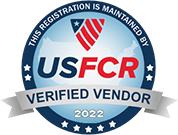IT expenses have come into the spotlight even more than normal since the Covid-19 pandemic swept the globe. IT organizations, large and small, are being asked to prove value and identify areas for savings during a time when technical support is needed most.
Although there are specific Post-Covid KPIs that can help you maintain customer satisfaction during these unique times, this article explores ways you can shift the organizational perception of IT operations from overhead to cost savings any time.
It starts with identifying the KPIs that can show tangible value to management.
KPIs and the Perception of ITs Value
You may have heard management say “IT is not a revenue-generating department”. For some, it is seen as overhead. A “money-spending” department. However, if IT does its job right, the department can be correctly viewed as a “money-saving” organization. This requires putting the IT structure into the correct context within the organization.
Information technology is a necessary part of any real business regardless of industry. IT Service Management is about taking the company’s investment in IT and providing value to the business.
Having the correct KPIs in place will give you the right lens through which the business leaders can see the value in real dollars. There are several KPIs but they most commonly map into two major categories of KPI, Foundational and Direct Cost Effect.
Foundational KPIs
Foundational KPIs reflect the current state of IT service delivery as it stands today. These KPIs provide a measure of how you are doing as an organization and what value you are currently providing. These KPIs include:
- Current Infrastructure Stability – a trend analysis and failure report of key IT infrastructure systems. This information can help identify technology and process that either need to be addressed through upgrade, replacement, or retirement.
- Ticket Volume & Quality – data that provides trend analysis on where the support and services are being used. This information can help maximize resource allocation and determine if more resources may be required.
- SLA Performance – this KPI can help determine if SLAs agreed upon between IT and the business units are being met. The net result of this data can determine if IT needs to adjust its processes, requires more resources, or if the SLAs themselves need to be adjusted.
- Customer Satisfaction Scores – this is how the business feels that IT is responding to their needs. This data is valuable in helping IT identify areas that need improvement or expectations that need to be level-set within the business.
- Cost Per Ticket – this management-level KPI is critical to mapping services and support to real dollars. This data will help maximize budget allocation and justify budget increase where applicable.
- Lost Productivity – this KPI is normally measured in work hours and generally targeted to revenue-generating components of the organization (but can be applied across the board). Once the work hours are translated into cost (salary vs lost revenue for example), the urgency to address the root of the problem, either through technology or resource allocation (or both) tends to increase at the management level.
Direct Cost Effect KPIs
Direct Cost Effect (also called “Vanity” or “Glamour”) KPIs reflect the areas that provide actual savings or performance improvement. These KPIs show the value of increasing IT efficiency in direct savings which include:
- First Call Resolution – The Service (or Help) Desk is usually the 1st line of contact with IT and in most organizations, the lowest cost analyst. Every escalation of a ticket that begins at this level literally adds dollars to the cost of resolution or completion of service. Knowing how many and what classification of tickets that are or could be resolved and completed at this level can help increase savings.
- Ticket Deflection – this KPI refers to the number and classification of issues or services that are handled by the end user themselves with the aid of IT Self Service and Knowledge Management, again direct savings by obviating the need for IT intervention.
Summary
As an IT Organization, being able to track these KPIs more effectively gives you honest data to show your business leaders the value of their IT investment and can help strengthen your position when requiring an increase in resources to keep up with business demands.
Also, having this information available to IT Management on a continual basis will allow the organization to become more flexible and agile, from both a budgetary and performance basis and agility is a key component to a growing business.
For help with transitioning to a more mature ITSM product or developing these valuable KPIs, please contact the Cireson team.



